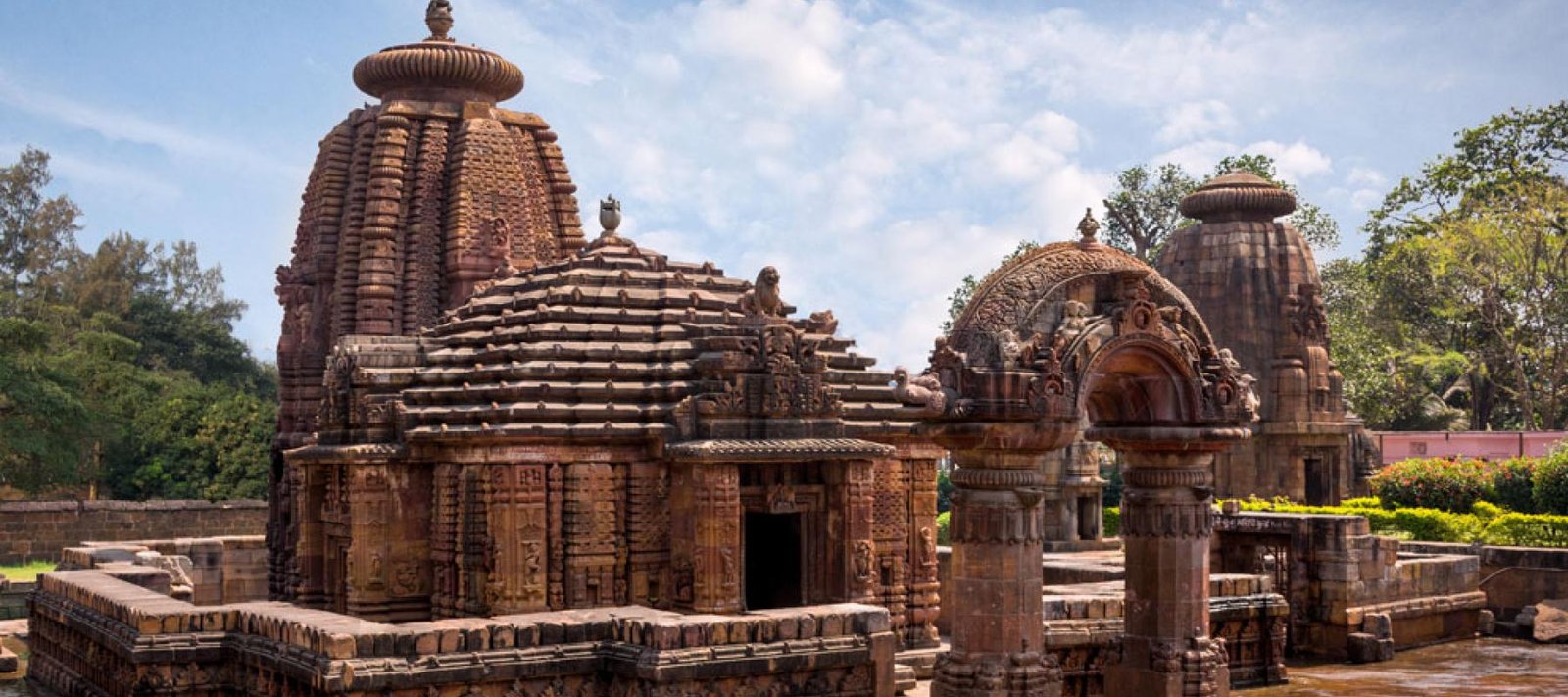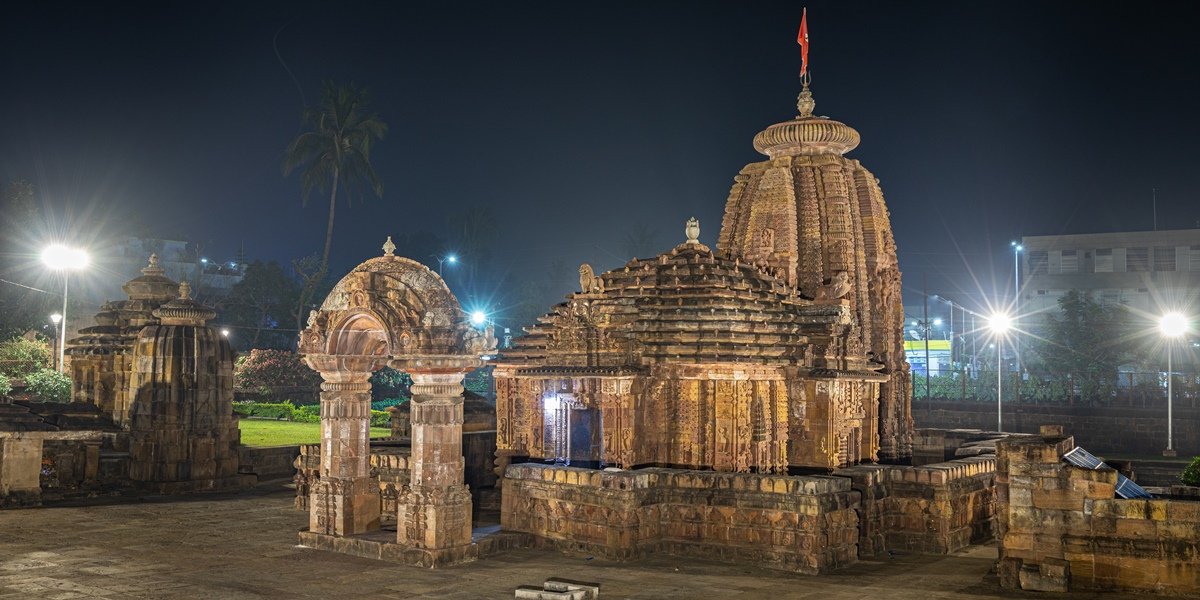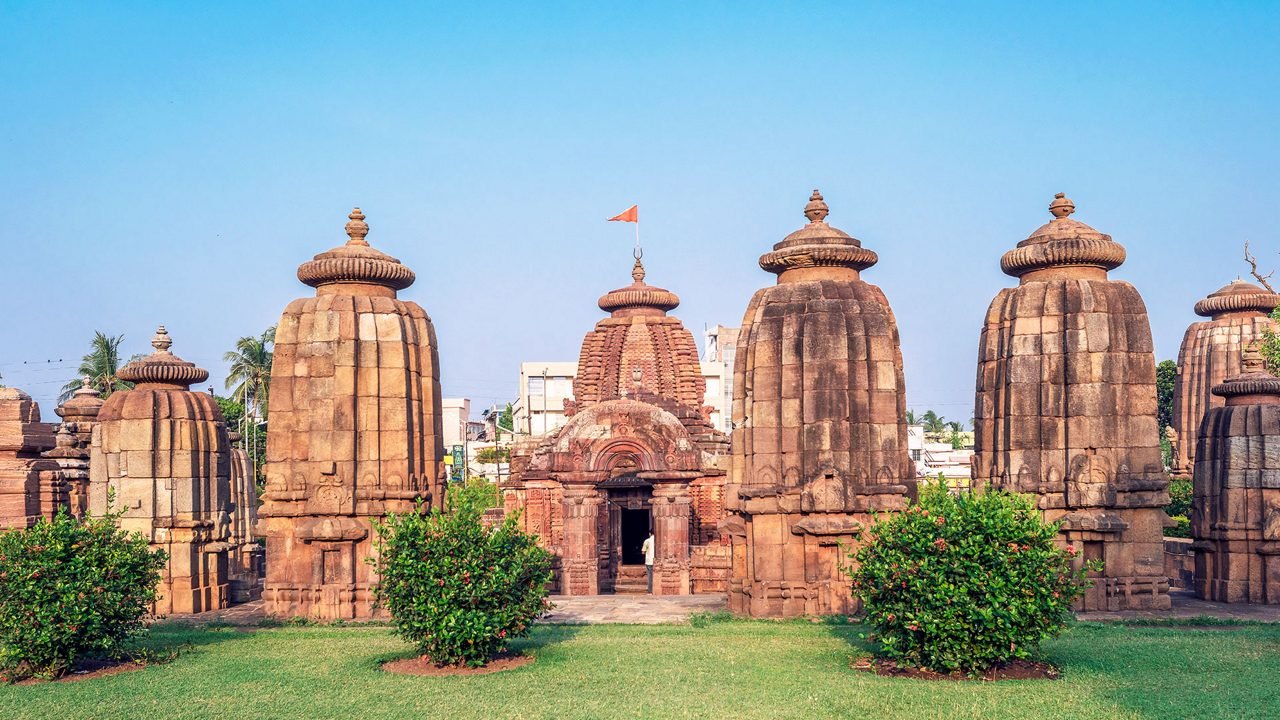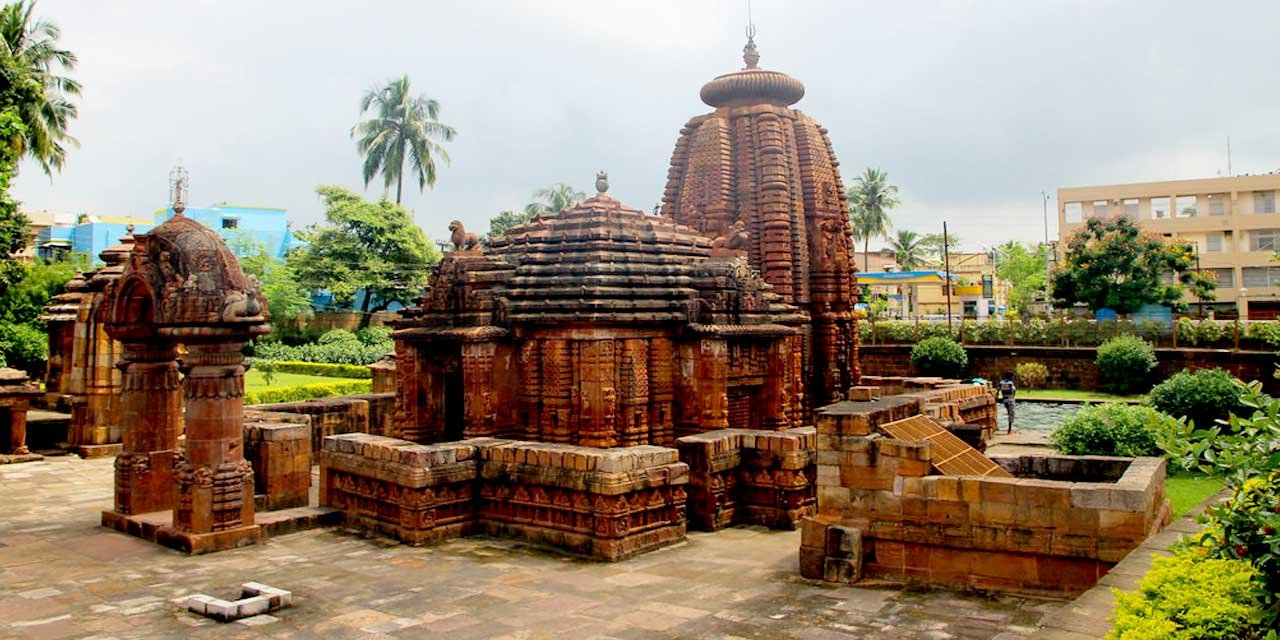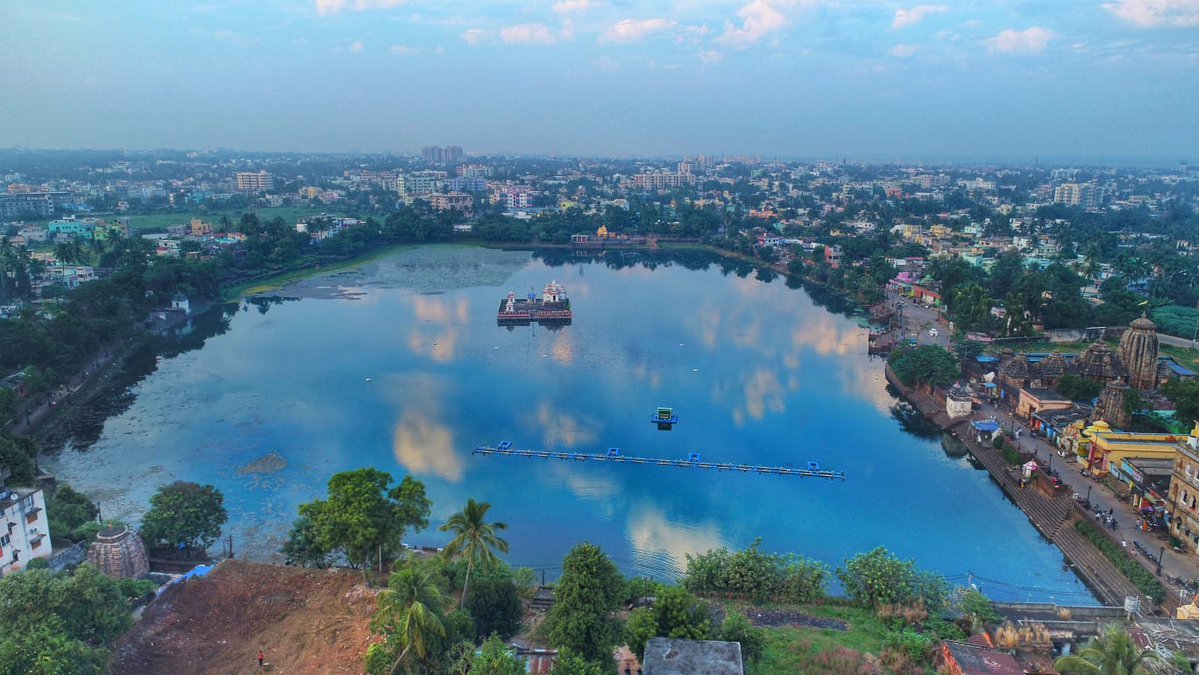The Mukteswara Temple in Bhubaneswar holds significant historical value as a 10th-century masterpiece of Kalinga architecture. The culmination of earlier temple designs and the start of a new architectural experimentation period seen in later temples like Lingaraj and Rajarani. Built by the Somavamshi Dynasty, it is a transitional monument, notable for its intricate carvings, distinctive freestanding torana gateway and unique pyramidal roof style, making it a cornerstone for understanding the evolution of Odisha temple architecture.
In this article, I have shared the Historical Significance, Architecture & Other Details of the Temple.
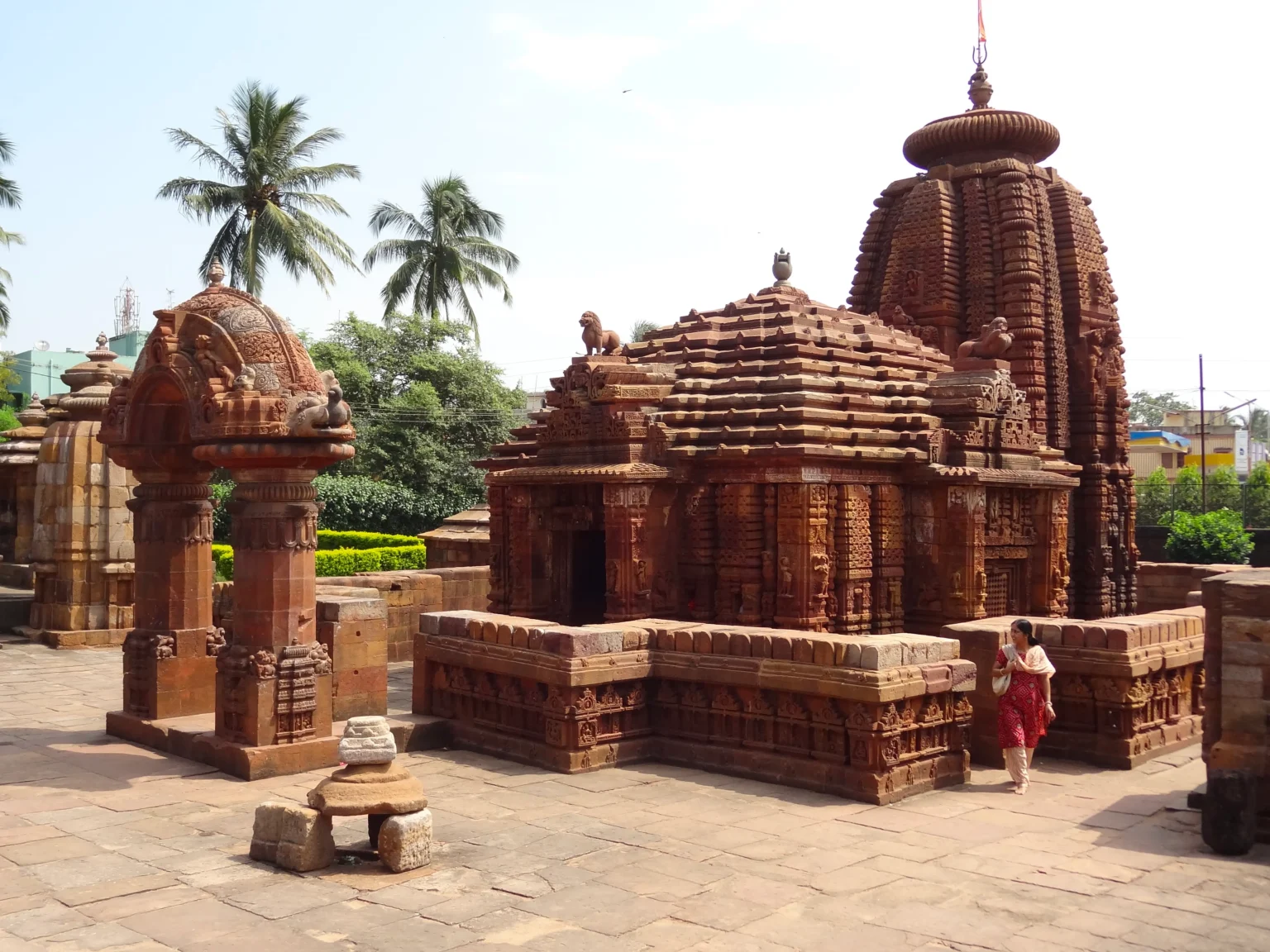
Architecture of Mukteswara Temple Bhubaneswar
The temple, built in The Kalinga architectural style, has a height of approximately 35 feet. It is considered as a ‘Gem of Odisha’ for its elaborate architecture that comprises intricate carvings, diamond-shaped windows featuring lattice design and sculptures of characters from the popular tales of Panchatantra.
Surrounded by an octagonal compound wall featuring intricate carvings, the temple is believed to have been built with a somewhat new pattern that was a development from its predecessors, something that went on to be replicated in the architecture of temples in the city built later.
The entrance to the temple has a spectacular arch-shaped gateway (Torana). It is among the few temples in the city that have been constructed in the Pitha Deula style, meaning the building has a square shape with the roof having a pyramid shape. This style is one of the distinct temple styles from Kalinga architecture, the others being Rekha Deula and Khakhara Deula.
The arched gateway, which shows The unique influence of Buddhist architecture, is flanked by two pillars featuring carvings of smiling women wearing beads and ornaments. It is further decorated with sculptures featuring elaborate scrolls and female forms, along with carvings of peacocks and monkeys.
The temple’s ‘vimana’ has a square shape with a raised platform with pilasters on the façades. Its‘shikara’, which is about 34 feet, is decorated with carvings of four ‘Natraj’s’ with ‘kirthimukhas’. The inner sanctum of the temple has a doorway with an image of Ketu with three hooded snakes.
There is a tank called Marichi Kunda inside the temple premises towards the eastern side, while a well can be found towards its southwest corner. As per legends, a dip in Marichi Kund can cure infertility in females. Besides the main temple, there are other additional shrines on the premises featuring Shiva Ling
Mukteswra Temple Festival:
The primary festival at the Mukteswara Temple is the annual Mukteswar Dance Festival, held in January to showcase the Odissi classical dance form. While a site of ongoing worship for Lord Shiva with regular rituals, its main attraction is this cultural event, which features renowned Odissi dancers performing in the historic temple setting.
Photography Time Of Mukteswara Temple:
best photographic lighting At Mukteswara Temple, aim for a weekday in the late afternoon, around 4 PM onwards, when the sun is less intense and the light is softer, especially if you want to avoid people. The temple is generally open to visitors from 6:30 AM to 7:30 PM, though some sources mention slightly different hours, like 7 AM to 7 PM or 6 AM to 7 PM. Photography is allowed, but there are rules for specific sacred areas.
Visit Info :
- Timings: 6:30 AM – 7:30 PM every day
- Entry Fee: Free
Location: Rajarani Temple Road off Tankapani Road, in Old Town Bhubaneswar
Learn more: Historic Temples of Bhubaneswar
